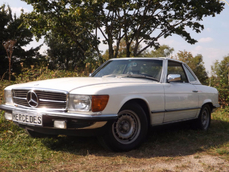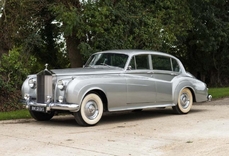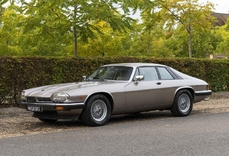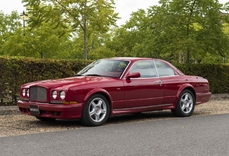Mercedes-Benz 380SLC w107 SLC (LHD) 1981
General description :
absolutely stunning Jet Black over special order Charcoal velour interior
35,351 original miles from new
Exceptionally low mileage
Truly one of the best SLCs on the planet
Incredibly high specification
The perfect car for high-speed continental cruising
1981 Mercedes Benz 380 SLC (LHD)
For nearly twenty years, Mercedes-Benz’s C107/R107 SL-series coupes and convertibles symbolized personal luxury. The SL from that era represented the finest in engineering, comfort, and luxury in the 1970s and ’80s. Mercedes-Benz kept the model fresh and appealing throughout its 18-year run, catering to the expectations of its high-net-worth customers who ranged from industry tycoons to fashion moguls and movie stars.
In recent years the feasibility, charm, and prestige of the classic SL and SLC models have placed them as favourable choices with enthusiasts. Without question, this 1981 380 SLC coupe is one of the most pristine examples available. The car is one of just 3,789 built worldwide during a very brief 16-month production run. Furthermore, it is one of only 1,991 built for 1981. The SLC is thought to be the intelligent choice over the regular SL.
Delivered on 27 March 1981 to its first proud owner via tourist delivery, this spectacular 380 SLC was the most expensive model offered by Mercedes-Benz at the time. Finished in Black over a rare and unusual European-only grey velour interior, the car presents in absolutely stunning condition today. Truly one of the best examples of the SLC anywhere, the car is simply immaculate, not only on the exterior but also the stunningly well preserved, special order Charcoal velour interior and underneath, the car presents like new. Even in the iconic rear quarter windows with the metal louvers which so often start to flake and crack on the surface, the louvers in this are as new too. You couldn’t wish to find a better example of an SLC anywhere, let alone the cost one would have to spend to get your average car to this standard. The original owner specified numerous options, including a sliding sun-roof, Becker radio, air-conditioning with climate control, and fog lamps. He would retain the SLC for over 25 years.
Today the 380 SLC is accompanied with a host of its original accessories, including its original owner’s manual, maintenance books and delivery booklets. Furthermore, the car features its first-aid kit, original Dambach safety triangle, spare wheel, and tool roll with tools. Most recently, the car received a major service, including new fluids, filters, and spark plugs, on 16 December 2019 to the tune of nearly CA$4,500, for which the invoices are available on file.
Offered with just 35,351 original miles (57,019 kilometres), making it also one of the lowest mileage cars available anywhere, this 380 SLC presents the opportunity to acquire a highly original example that would be suited for both touring and MBCA concours events. If you’ve always lusted after the idea of owning a “new” SLC, look no further because this is as close as you can get.
Now available for viewing at the DD Classics Dealership (0208 878 3355) in London, please call for more information.
1981 Mercedes-Benz 380SLC w107 SLC (LHD) is listed for sale on ClassicDigest in Surrey by DD Classics for £47950.
Car Facts
Car type : Car Make : Mercedes-Benz Model : 380SLC w107 Model Version : SLC (LHD) Engine size : 0.0 Model Year : 1981 Sub type : Pick up Location : Surrey Vehicle Registration : Undefined
47950 £
People who viewed this Mercedes-Benz 380SLC w107 also viewed similar Mercedes-Benz listed at ClassicDigest
Other cars listed for sale by this dealer
About Mercedes-Benz
In the annals of automotive history, the journey of Mercedes-Benz is a tale that unfolds with the ingenuity of its founding pioneers. In the year 1886, Karl Benz crafted the Benz Patent Motorwagen, a creation that would go down in history as the world's inaugural automobile. Unbeknownst to him, this moment marked the genesis of what would evolve into the most illustrious premium car manufacturer globally. The financial underpinning of this pioneering venture, interestingly, was provided by Karl Benz's wife, Bertha Benz, demonstrating a remarkable partnership that would set the tone for Mercedes-Benz's legacy.A parallel narrative emerged not far away, as Daimler-Motoren-Gesellschaft, founded by Gottlieb Daimler and Wilhelm Maybach, entered the scene. In 1901, they unveiled their automobile under the now-famous moniker "Mercedes," meaning "godsend" in Spanish. This name was bestowed upon the car at the behest of Emil Jellinek's daughter, the distributor for Daimler-Motoren-Gesellschaft. The wheels of innovation were set in motion.
Fast forward to 1926, a pivotal year that witnessed the merger of Daimler with Benz & Cie., culminating in the birth of Daimler-Benz. The amalgamation saw the adoption of "Mercedes-Benz" as the distinguished trademark for their automobiles, fusing the legacies of two visionary entities into one.
Contrary to perceptions of conservatism, the trajectory of Daimler-Benz unfolds as a chronicle of industry firsts. From the introduction of the honeycomb radiator to the float carburetor, and the pioneering implementation of four-wheel brakes in 1924, Daimler-Benz consistently pushed the boundaries of automotive innovation. The diesel-powered Mercedes-Benz 260 D in 1936 marked the inception of diesel engines in passenger cars. The iconic Mercedes-Benz 300SL Gullwing made history as the first car with direct fuel injection, albeit the Gutbrod's tiny 2-stroke engine can claim precedence.
Safety innovations became a hallmark, with Béla Barényi's patented safety cell design in the "Ponton"-models in 1951, featuring front and rear crumple zones. The W116 450SEL 6.9 saw the introduction of the Anti-Lock Brake system (ABS), another pioneering safety feature. From the first production airbags and beyond, the legacy of "firsts" continued to be etched into the fabric of Daimler-Benz.
Over its centennial journey, Mercedes-Benz has not merely produced cars but has sculpted automotive icons. The SSKL, 710 SSK Trossi Roadster, 770K Grosser, 540K Spezial Roadster, 300SL Gullwing, w100 600 Pullman, w111 280SE 3.5 Flachkühler, w113 230SL Pagoda, w109 300 SEL 6.3, and w201 2.3-16 Cosworth stand testament to the brand's commitment to engineering excellence.
The roaring Silver Arrows, or "Silberpfeile," including the W 25, W 125, W154, W165, and W196, created a legacy of dominance on the racetrack. These machines were not merely cars; they were expressions of precision, speed, and an indomitable spirit that left their competitors in the dust.
As Mercedes-Benz marches into the future, it does so not just as an automaker but as a custodian of a legacy, a torchbearer of innovation, and a beacon of automotive excellence. The road ahead is sure to witness the continued fusion of cutting-edge technology, timeless design, and an unwavering commitment to setting new standards in the world of automobiles.
One luminary figure who left an indelible mark was Béla Barényi, often heralded as the "father of passive safety" for his pioneering work in safety engineering. His patented safety cell design, featuring front and rear crumple zones, became a hallmark of Mercedes-Benz's commitment to occupant safety, setting new standards that reverberated throughout the automotive world.
Moving through the chronicles, the collaborative genius of Wilhelm Maybach, alongside Gottlieb Daimler, laid the foundation for Daimler-Motoren-Gesellschaft. Their innovations not only birthed the first Mercedes but established a culture of relentless pursuit of technological excellence that remains integral to Mercedes-Benz's DNA.
In the post-merger era of 1926, Ferdinand Porsche emerged as a prominent figure within Mercedes-Benz. His work on the Mercedes-Benz S-Type, a supercharged race car, garnered acclaim and set the stage for a legacy that extended far beyond the marque. Porsche's impact would later extend to his eponymous company, but his influence at Mercedes-Benz during those formative years was pivotal.
As the 20th century progressed, the legendary Rudolf Uhlenhaut emerged as a key figure. Uhlenhaut, an accomplished engineer and the driving force behind the iconic Silver Arrows, played a crucial role in Mercedes-Benz's dominance in motorsports. His engineering prowess and attention to detail were instrumental in creating some of the most formidable racing cars of the era.
In the latter half of the century, figures like Bruno Sacco, the head of design at Mercedes-Benz from 1975 to 1999, left an indelible imprint on the brand's aesthetic identity. Sacco's design philosophy, characterized by clean lines and timeless elegance, shaped iconic models like the W126 S-Class and the W201 190E, solidifying Mercedes-Benz's reputation for luxury and sophistication.
The narrative would be incomplete without acknowledging the contributions of engineers like Hans Scherenberg, whose leadership in the 1970s ushered in a new era of technological innovation at Mercedes-Benz. Scherenberg's tenure saw the development of groundbreaking technologies, including the Anti-Lock Brake system (ABS) and the introduction of airbags in production cars.





















